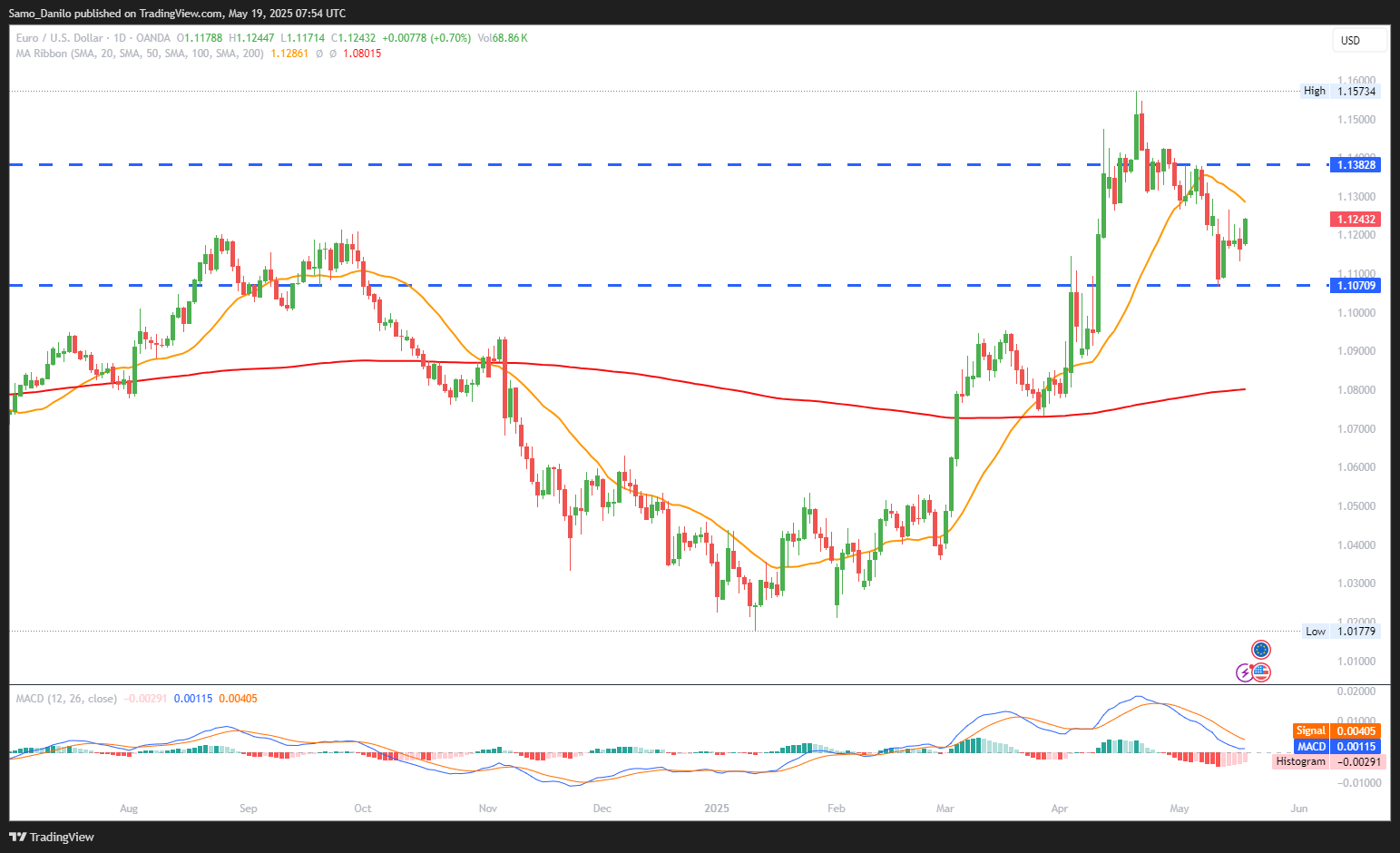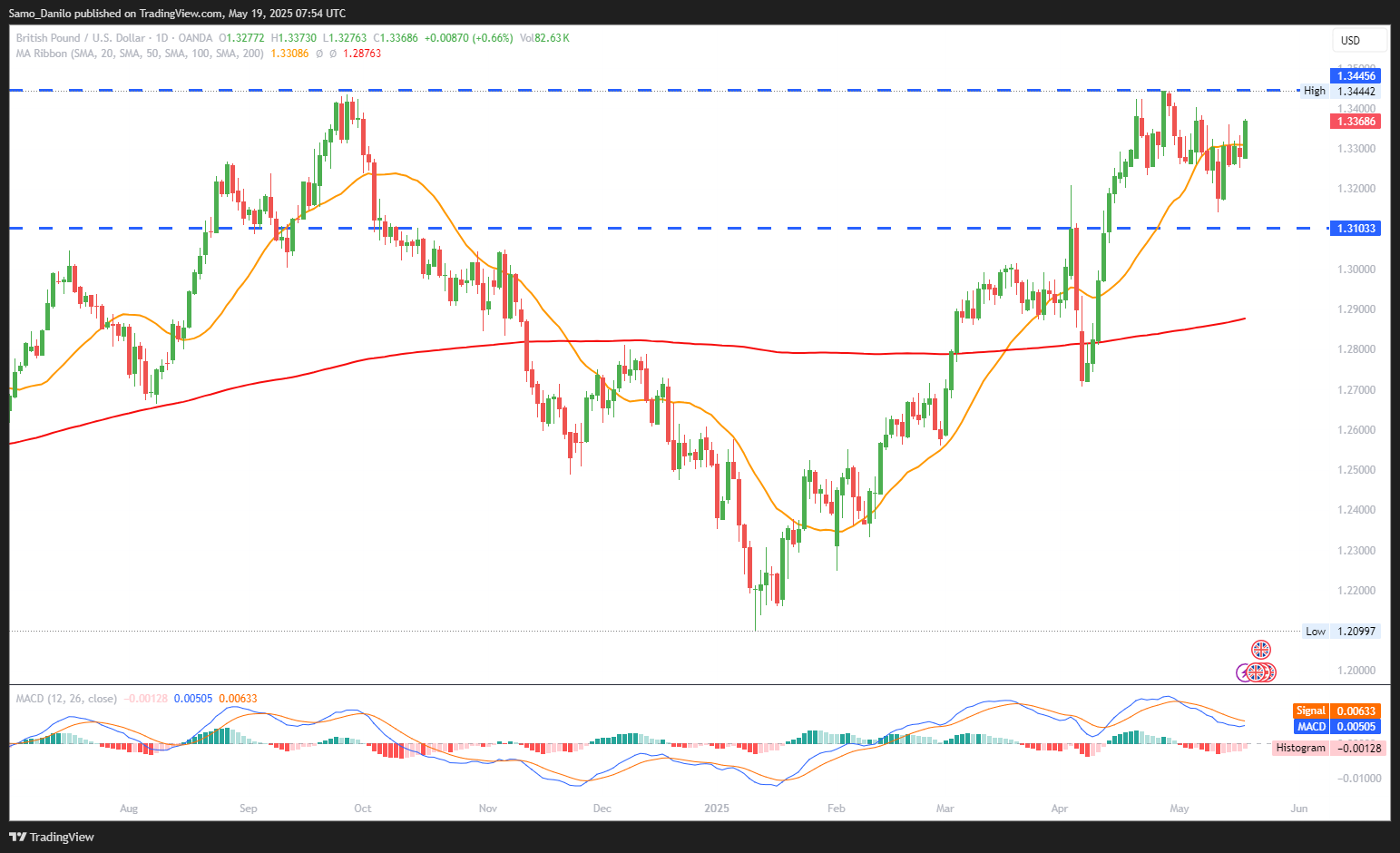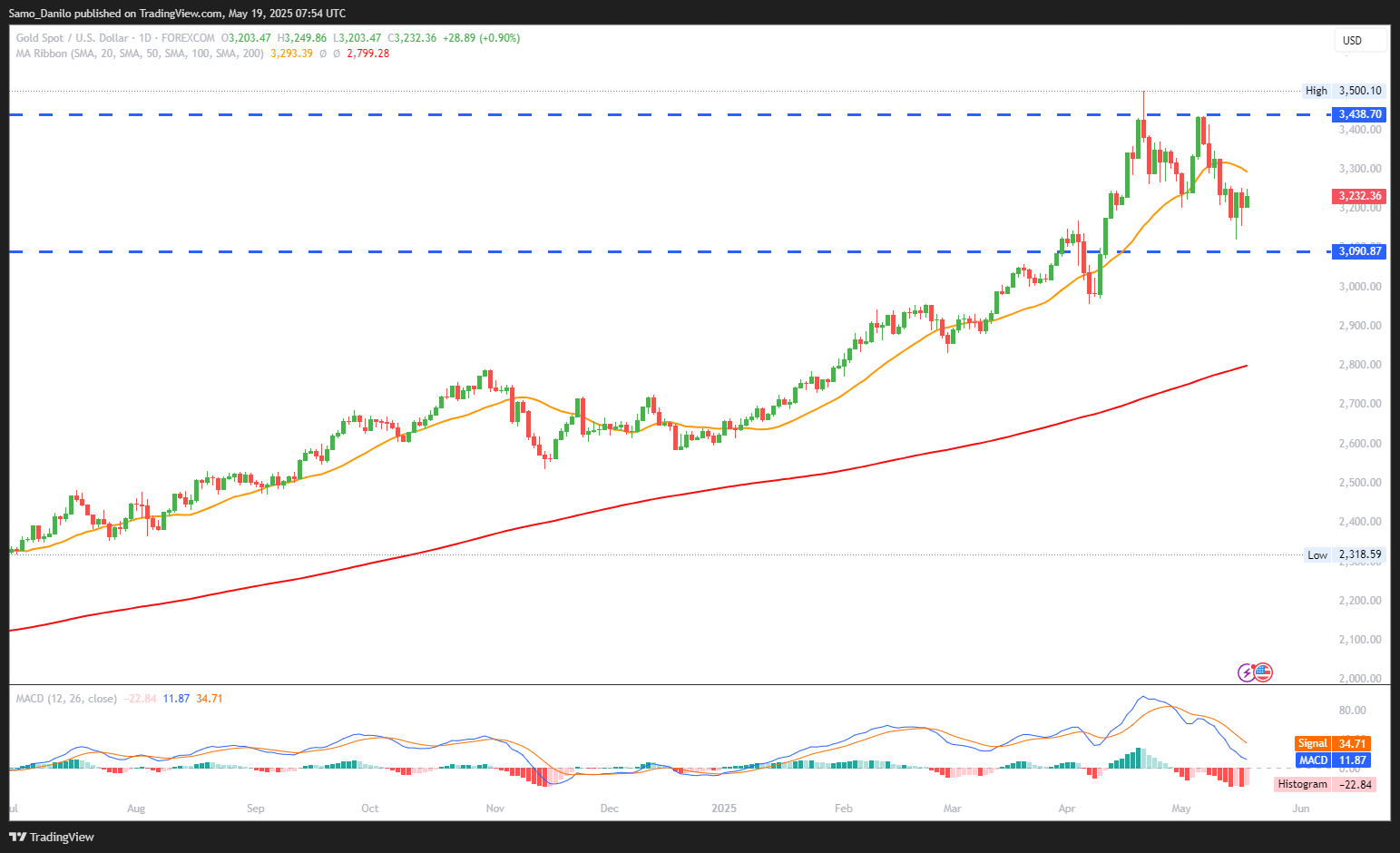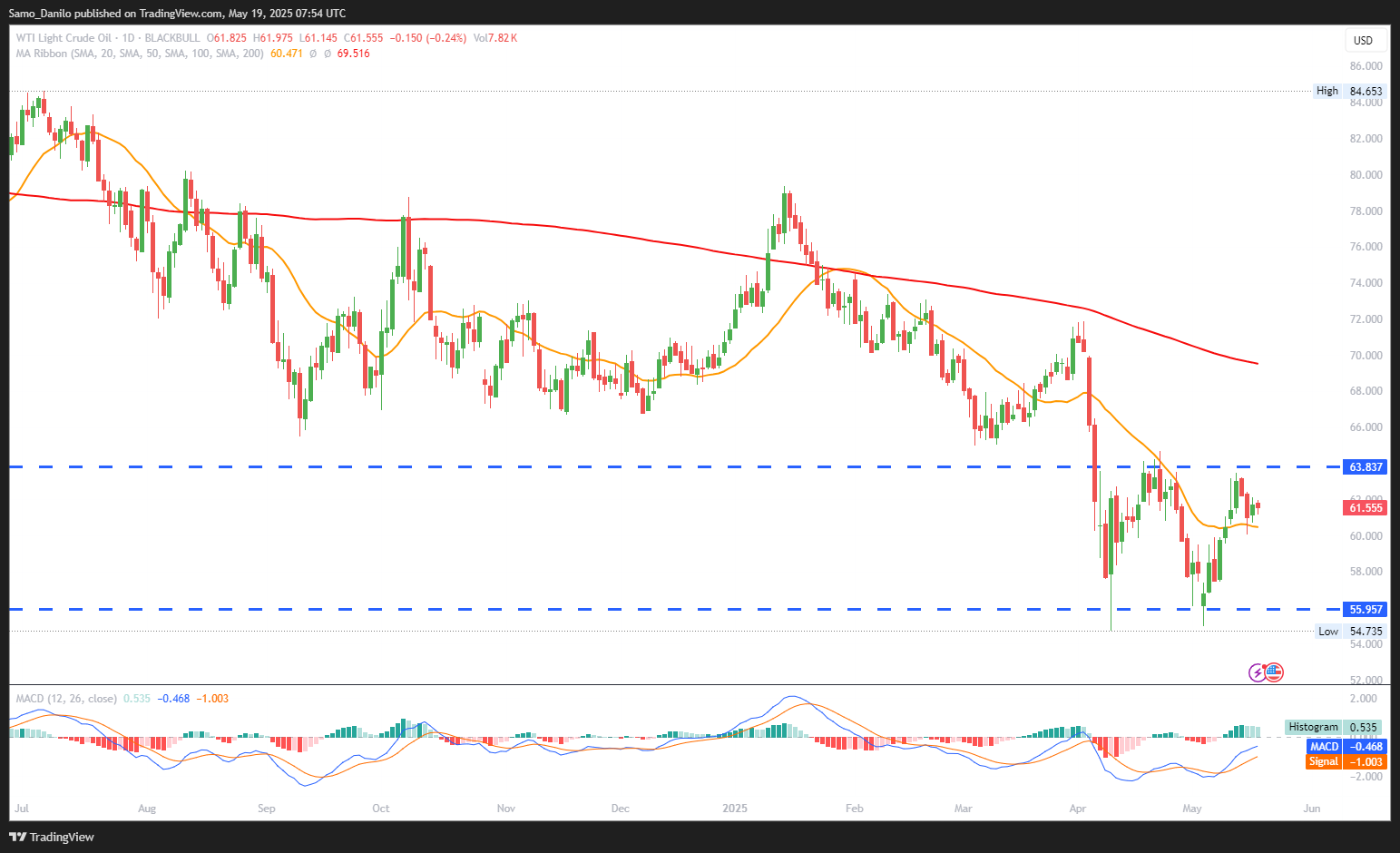EURUSD
- EUR/USD Price: The EUR/USD pair is trading modestly higher early in the week, hovering just above the 1.1200 psychological level amid a softening US Dollar. However, bullish momentum remains limited, as traders show caution following recent technical weakness.
- Technical Outlook: Last week's drop below the 200-period SMA on the 4-hour chart is viewed as a bearish signal, discouraging aggressive long positioning. This breakdown suggests that downside risks remain elevated unless the pair can reclaim key resistance levels convincingly.
- ECB's Lagarde: ECB President Christine Lagarde emphasized the surprising lack of strength in the USD during times of global uncertainty, attributing it to waning confidence in US policies. Her remarks subtly bolster the euro’s resilience despite mixed macro signals.
- Moody’s Rating: The US Dollar weakened after Moody’s downgraded the US sovereign credit rating to Aa1, citing growing fiscal concerns. The move has raised investor doubts about long-term US stability, providing modest support for EUR/USD in the short term.
- EU-UK Summit: An outline agreement between the EU and UK to strengthen post-Brexit relations ahead of a key summit in London signals political goodwill and cooperation. While economic impacts are still uncertain, the move is euro-positive from a sentiment standpoint.
Closing statement: While EUR/USD is seeing a mild bounce, technical and macro headwinds continue to limit upside potential. The pair remains vulnerable slightly above 1.1200, with near-term direction likely hinging on the follow-through from Moody’s downgrade and outcomes from the EU-UK summit.
GBPUSD
- GBP/USD Price: The GBP/USD pair climbed back above the 1.3300 level in Monday’s European session, recovering from earlier losses. The move reflects renewed market optimism driven by supportive domestic data and a softer USD environment.
- EU-UK Ties: UK Prime Minister Keir Starmer is set to unveil a Brexit "reset" agreement, aiming for the closest economic and regulatory alignment with the EU since the original departure. Coverage includes trade, agriculture, security, and defense, providing a potential boost to market confidence in the pound.
- BoE’s Outlook: Thursday’s robust UK GDP data, both monthly and quarterly, supports expectations that the BoE may hold interest rates steady in the near term. The data hints at underlying economic resilience, particularly if inflationary pressures persist or rise.
- US Fiscal Concerns: Moody’s revised its US federal debt forecast, now expecting it to rise to 134% of GDP by 2035, citing higher debt servicing costs and lower tax revenues. The long-term fiscal outlook puts additional pressure on the USD, supporting cable.
- US Consumer Sentiment: The University of Michigan Consumer Sentiment Index fell to 50.8 in May, marking a fifth straight monthly decline and the lowest reading since June 2022. The sour mood reflects persistent concerns over inflation, job security, and US policy direction.
Closing statement: GBP/USD is gaining traction on positive UK economic signals and political developments, while US debt and sentiment concerns weigh on the dollar. A sustained move above 1.3300 could open the door for further upside, contingent on market reaction to the Brexit reset deal and upcoming inflation data.
XAUUSD
- XAU/USD Price: Gold prices opened the week on a firmer note, recovering slightly following last week’s decline. However, the technical outlook remains bearish, with the 14-day RSI hovering just below the neutral 50 mark, signaling limited bullish momentum.
- Tariff Threat: US Treasury Secretary Scott Bessent’s renewed tariff threats over the weekend have added to global trade anxiety. His comments reinforced risk-off sentiment, providing marginal safe-haven support to gold, even if temporary.
- Trump Tax Bill: Progress on President Trump’s tax cut legislation, which passed a House panel on Monday, signals potential for economic stimulus, which typically pressures gold due to rising yield expectations. However, the broader market impact remains muted for now.
- Middle East: While Israel’s government has agreed to allow limited food aid into Gaza, indirect talks with Hamas have stalled. Continued uncertainty in the region offers underlying support for gold, as investors monitor headlines for escalation.
- US Economic Calendar: With no major US data releases or FOMC speeches scheduled today, gold traders will likely focus on technical levels and geopolitical developments for short-term direction, reinforcing a sideways trading bias.
Closing statement: Gold remains vulnerable from a technical standpoint but finds mild support from geopolitical risks and a softer USD tone. Without fresh macroeconomic drivers, market sentiment and news flow will dictate near-term moves, with resistance seen near $3,245 and support around $3,175.
CRUDE OIL
- Crude Oil Price: West Texas Intermediate turns higher in early‑Friday European trade, clawing back some of this week’s losses to hover near $62.40 per barrel. The bounce is largely technical, with dip‑buyers defending the $62 handle after prices fell almost 4 % since Monday.
- Iran–US Nuclear Talks: Markets remain on edge as Washington insists any accord must bar Iranian uranium enrichment, a condition Tehran has previously rejected. Failure to reach a deal would keep roughly 1 mb/d of Iranian barrels off the market, providing a latent floor under prices.
- Supply Forecast: The International Energy Agency now expects higher output from Saudi Arabia and key OPEC+ allies as voluntary curbs are gradually unwound. The revision highlights a loosening supply backdrop, tempering the impact of near‑term geopolitical risks.
- Ukraine News: Ukraine reported the largest single‑day drone assault since the war began, underscoring persistent Eastern‑European instability. While no major energy infrastructure was hit, the episode keeps a modest risk premium embedded in crude prices.
- Chinese Data: China’s latest industrial production beat forecasts, but retail sales and fixed‑asset investment softened, pointing to an uneven recovery. The data blunt the bullish impulse from the 90‑day US–China tariff pause, limiting follow‑through buying in oil.
Closing statement: WTI’s rebound is supported by Iran‑deal uncertainty and fresh geopolitical jitters, yet meaningful upside is constrained by rising OPEC+ supply and patchy Chinese demand signals. Without a clear catalyst—such as a surprise inventory draw or escalation in the Middle East—prices are likely to range‑trade around the low‑$60s in the near term.
DAX
- DAX Price: The DAX climbed 0.30% on Friday, marking its fifth straight session of gains and adding to Thursday’s 0.72% jump. A rare alignment of rate cut hopes and positive trade developments reignited investor sentiment, helping the index move closer to its all-time highs.
- Defense Stocks: A failed peace meeting between Russian President Putin and Ukrainian President Zelensky fueled fresh demand for European defense companies. Rheinmetall rose 2.44%, leading sector gains, as the market repriced prolonged conflict risks and defense spending.
- Eurozone Trade Surplus: Eurostat data showed a sharp rise in the Eurozone’s trade surplus, up from €24.8B to €36.8B in March. The increase, driven by 13.6% YoY export growth, likely reflects tariff front-loading as firms rushed shipments ahead of potential trade friction.
- Eurozone Inflation: Markets will be watching finalized Eurozone inflation data on May 19, which could influence the ECB’s upcoming rate decision. Core CPI rose to 2.7% in April, up from 2.4% in March, keeping hawkish expectations modestly alive despite broader rate cut optimism.
- US Data: US data was a mixed bag—consumer sentiment deteriorated, while 1-year inflation expectations surged from 6.5% to 7.3%. The combination raised stagflation concerns, complicating the Fed's rate path and creating potential headwinds for global equities, including the DAX.
Closing statement: The DAX continues to benefit from a favorable macro mix of easing inflation and resilient trade flows, though geopolitical risks and mixed US signals remain key variables. The index could challenge fresh highs if ECB policy turns dovish next week, but any hawkish surprises or further Fed hesitation could stall momentum.




